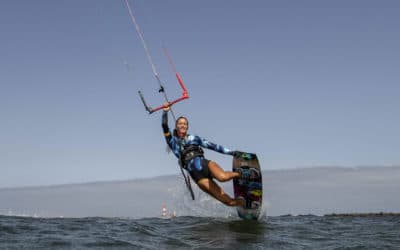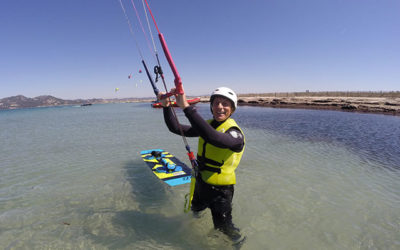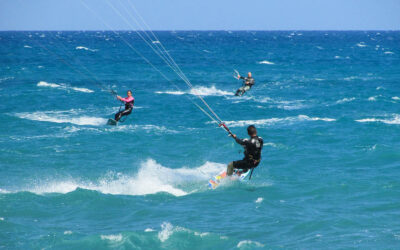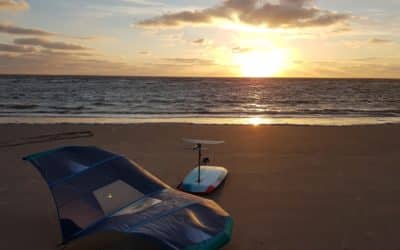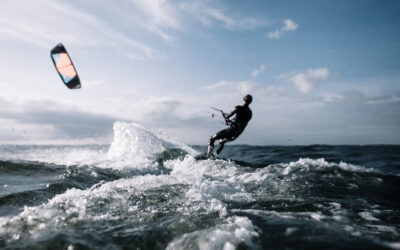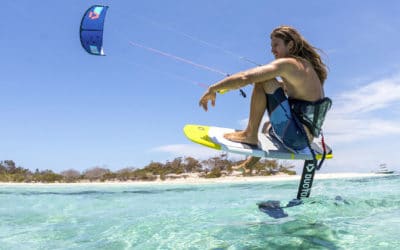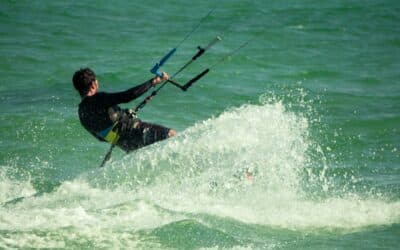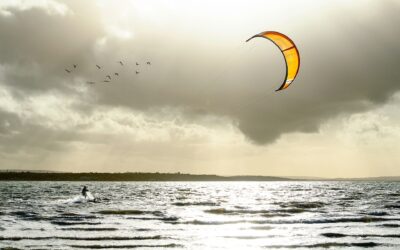Is Kitesurfing Difficult? An Exploration into the Heart of the Waves
It’s a question that hovers in the air like a kite in full flight: is it really that complicated to master kitesurfing? This water sport has captivated adventurers seeking thrills and freedom, but it also gives beginners cold sweats. Between legends of spectacular falls and the viral video of “a man carried by the wind up to” the top of the world (or almost), it’s time to set a few things straight. Hold on tight to your harness, because KGG Kitesurf School in Hyères is about to reveal all the secrets of this captivating sport.
Kitesurfing Accessibility: Myths and Realities
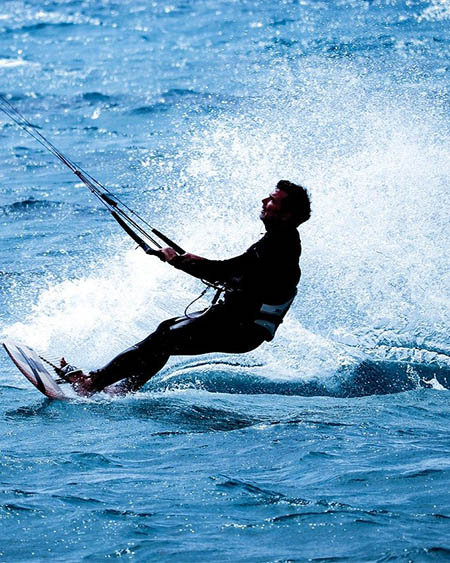
Kitesurfing’s popularity has exploded in recent years, largely due to its increasing accessibility. Technological advancements have greatly simplified “getting started for beginners. Think about it: the time when only the sport’s big names paraded on the beaches, like unattainable deities, is over. Today” hui, equipment is more intuitive. Gone are the days of needing kilos of muscle; hello cleverness and technique.
Modern Equipment: Allies for Beginners
A glance at your beach neighbor will be enough to understand why kitesurfing schools worldwide are seeing a diverse audience flocking in. Current equipment is designed to maximize safety and minimize the difficulty of maneuvers. Quick-release systems, easy-to-handle kites, and robust structures reduce the inherent risks of the sport, while promoting a dynamic and enriching learning curve.
It’s no longer just about being physically strong, but about using finesse and coordination. The wind, a capricious guide for aspiring sailors, then becomes your play partner. Technology is there to ease your hesitant first steps, without ever compromising the raw pleasure each session offers.
The Importance of Basic Lessons for Starting Kitesurfing
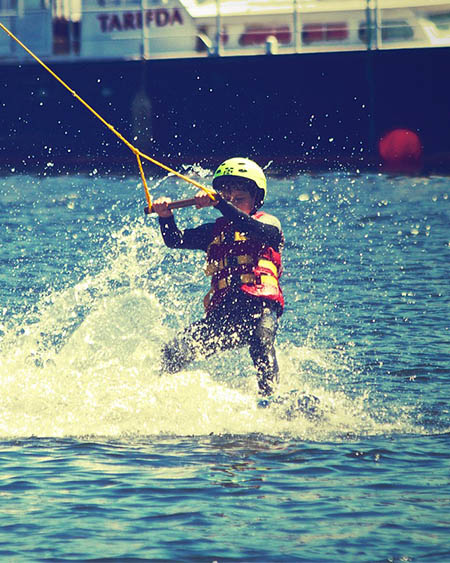
Some still hesitate to cross the threshold of a school, fearing mockery or painful failures. Make no mistake: the fear of failing often hurts more than any controlled fall. Our method is based on progressive teaching, respecting everyone’s limits. Let’s take an example: in our lessons, Greg and Colin divide sail mastery into several levels, jumping right in when it’s certain that safety takes precedence over daring. If you’re a beginner and looking to experience the first sensations of gliding, consider participating in a Kitesurfing course for beginners near you.
The Different Stages of Learning
- Equipment Knowledge and Preliminary Preparation
- Mastering Essential Safety Techniques
- Kite Handling on Dry Land
- First Moments on the Water: Discovering Balance
- Progressing Towards the Water Start: The Key to Enjoyment
- Refinement and Personal Style
This is our teaching framework. By carefully guiding each learner through the necessary foundations, we demystify the perceived difficulty of kitesurfing, step by step — or rather, wave by wave.
Techniques and Safety Awareness
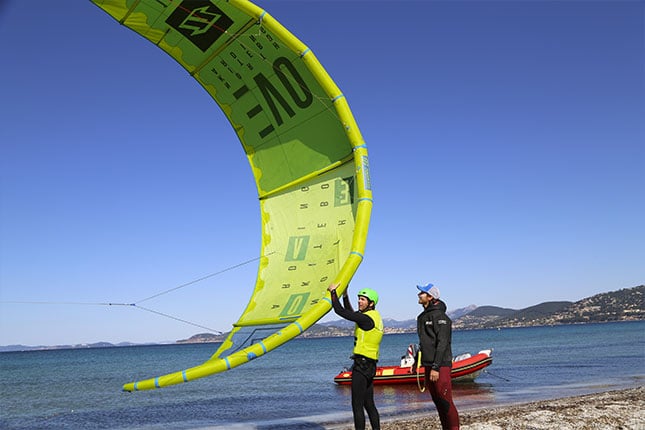
Through practical immersions followed by theoretical feedback, we instill the essentials for early identification of dangerous gusts, sudden current changes, or conflict situations. Better equipped to handle unforeseen weather challenges, our students become adept enough to glide through the waters surrounding Hyères.
Some Tips from Greg and Colin for Safer Kitesurfing
- Conduct all effective warm-up sessions
- Dress appropriately for the ambient temperature
- Know how to recognize and use international signs between surfers
- Do not neglect any preventive measure when unusual situations arise
- Always carefully check and adjust each of the onboard mechanisms
Patience and Perseverance: the Watchwords for Progress
Ultimately, learning kitesurfing means embracing a new philosophy: that of patient and meticulous effort. No magician will appear to perform the improbable spell transforming initial clumsiness into triumphant flights on the first try. Determination, coupled with an essential dose of stubbornness, modestly leads to the desired success. Not to mention the acquired maturity that will be evidenced by the satisfaction of personally overcoming challenges against the Almanarre marine immensity.
Make no mistake, kitesurfing does not offer inactive complacency either: the path to mastery is rugged and punctuated by thoughtful attempts. Each season returns strengthened by personal discoveries, a captivating journey through emotional valleys rhythmic with the tides.
Frequently Asked Questions about Kitesurfing for Beginners
What Physical Qualities Are Required for Kitesurfing?
Contrary to popular belief, kitesurfing does not require a specific physical condition. Of course, good mobility and a minimum of endurance facilitate learning, but what matters most is coordination and technical mastery. With the help of qualified instructors, beginners quickly learn the basics necessary for their progress.
How Long Does It Take to Master Kitesurfing?
This varies greatly depending on the individual. Some grasp the fundamentals after only a few hours of lessons, while others will need several days to feel comfortable on the water. Regular practice and personal involvement play a crucial role in the speed of progress.
What Safety Equipment is Essential?
To this question, Greg firmly insists: besides the helmet, a buoyancy vest and an intuitive line cutter will enhance safety. Each of these elements is essential to ensure continued safety during your sea outings.
Can you learn self-taught?
Although some have tried the experience, it is strongly advised to start with the help of experts. Experienced instructors not only provide valuable practical advice but also ensure student safety. Self-taught or not, guidance from a kitesurfing school remains the best way to learn effectively and without unnecessary risk.
Search
Catégories
Recent Posts
Suivez-nous !

